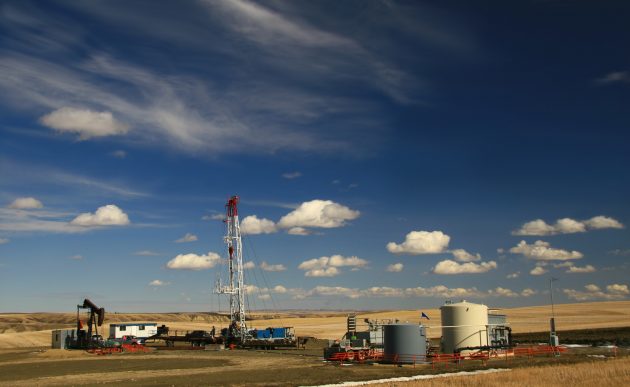
Canada’s net zero goal hinges on stronger policy and strategic bets: report
by CM Staff

First comprehensive modelling report on how Canada can achieve net zero emissions by 2050 shows success relies on decisive action in the face of uncertainty

Regulations to reduce methane emissions apply to oil and gas production activities across Canada. (CNW Group/Environment and Climate Change Canada)
OTTAWA — Canada’s Net Zero Future, published by the Canadian Institute for Climate Choices, is the first in-depth scenario report to explore how Canada can reach net zero emissions by 2050.
Canada can not only achieve net zero, the report finds, it can capitalize on unique advantages by doing so. However, success hinges on governments and businesses decisively scaling up solutions available, while navigating unavoidable uncertainty.
Achieving net zero emissions requires shifting to technologies and energy systems that do not produce greenhouse gas emissions, while removing any remaining emissions from the atmosphere and storing them permanently. To assess a mix of policies and technologies that could contribute to Canada reaching net zero within 30 years, the Institute analyzed more than 60 modelling scenarios and undertook supplementary research and consultation with policy experts, industry leaders, governments and civil society.
The report finds Canada’s success in building a prosperous net zero economy relies on advancing two distinct types of climate solutions: “safe bets” and “wild cards”.
Safe bets—commercially available, cost-effective technologies like electric vehicles, heat pumps in buildings, and smart grids—can generate at least two-thirds of the emission reductions required to hit Canada’s 2030 climate target. Canadian businesses, governments and households must massively scale up these solutions to achieve Canada’s 2030 and 2050 climate commitments. This will require creating incentives through increasingly stringent policy.
Success also requires wild card solutions—high-risk, high reward technologies like advanced biofuels, zero-emissions hydrogen, and some types of engineered negative emission technologies that are not yet commercially available. If they prove viable, these emerging solutions could drive significant emission reductions between 2030 and 2050—and could offer valuable export opportunities to meet growing demand for low-carbon technology and expertise. Realizing the potential of these solutions also requires policy, such as support for pilot projects, R&D, and tax incentives now, to increase the odds these prospective solutions come through.
As major economies including China and the European Union move towards net zero emissions, Canada’s energy systems and economy will have to keep pace or risk competitiveness pressures and shrinking market share. This is particularly apparent as the United States, Canada’s largest trading partner, pivots under the Biden administration to pursue major investments in clean energy and a commitment to achieve net zero by 2050 or earlier.
Forces outside Canada’s control will likely be the primary drivers of structural changes within Canada’s economy and energy systems in the decades ahead, the report finds. This includes not only climate policy action in other countries, but also forces like global oil market dynamics and shifting market trends and investor preferences. Developing both Canada’s safe bet and wild card advantages is key to creating opportunities to pivot and adapt, the research concludes.
Achieving Canada’s 2050 target requires policy makers to act decisively in the face of uncertainty. To scale up safe bets, governments should continue to steadily increase the stringency of policies such as carbon pricing and flexible regulations.